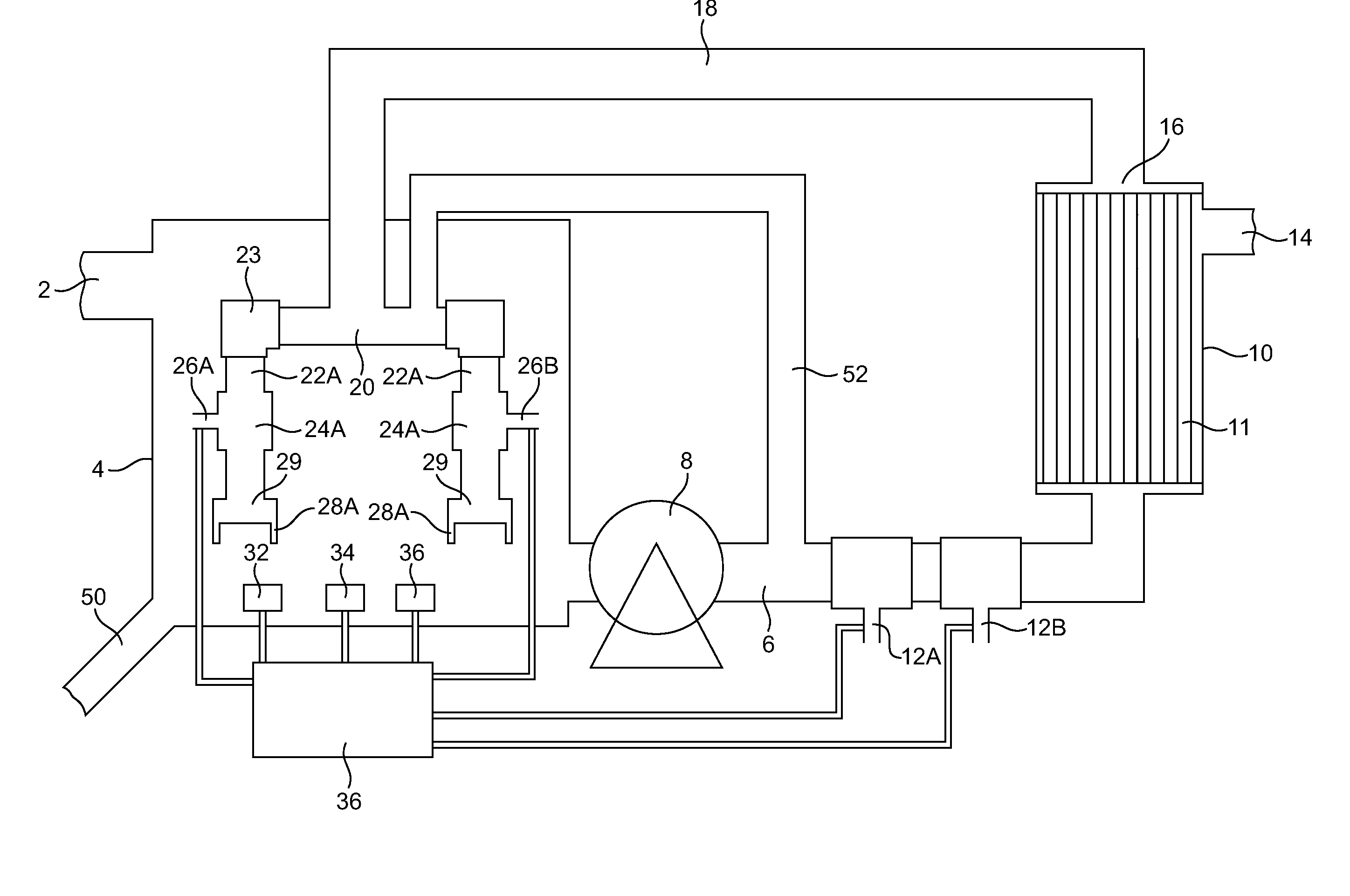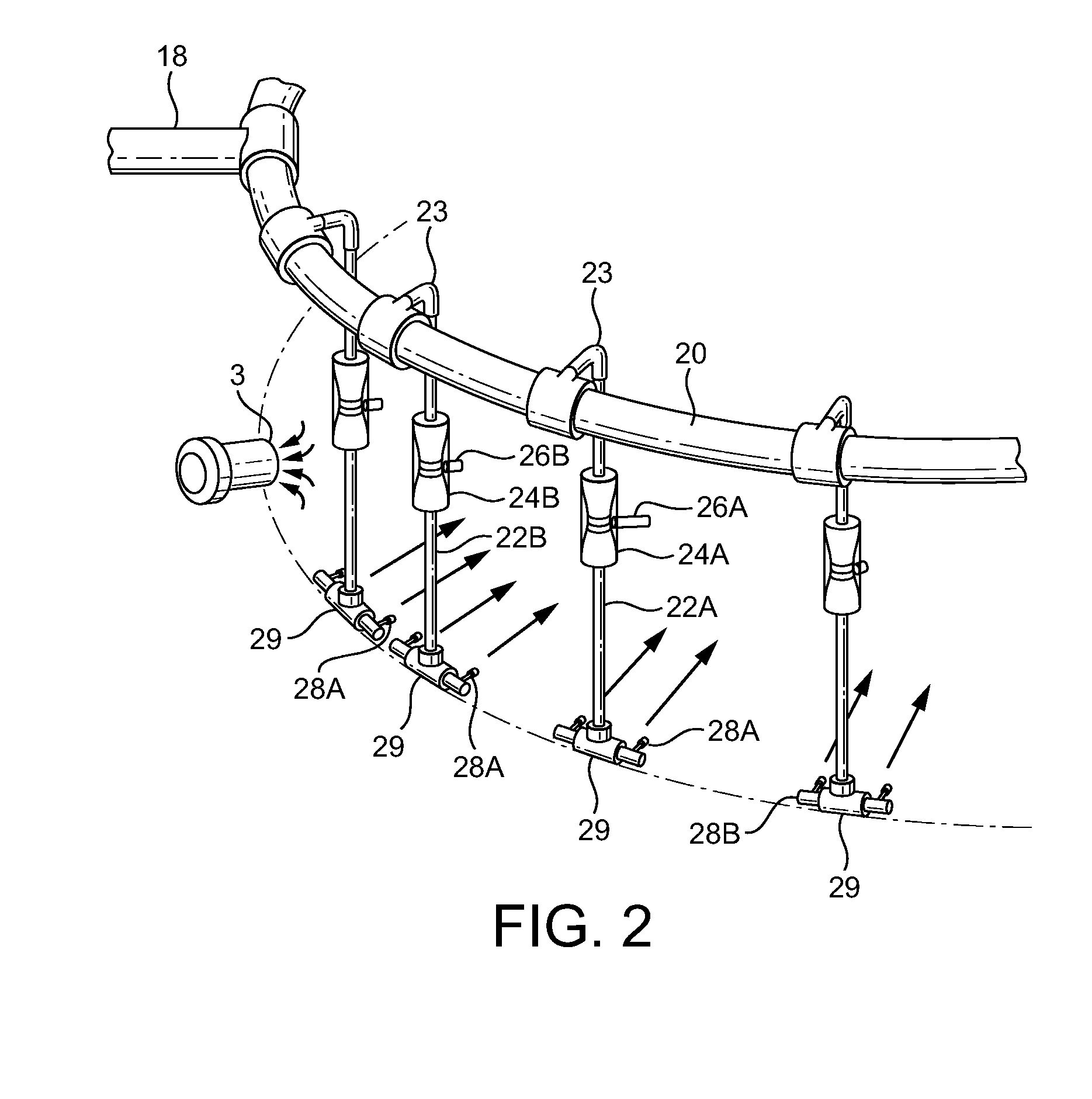Treatment of aqueous liquid
- Summary
- Abstract
- Description
- Claims
- Application Information
AI Technical Summary
Benefits of technology
Problems solved by technology
Method used
Image
Examples
Embodiment Construction
[0026]Like parts in different Figures are referred to below by the same reference numeral. The use of the Suffix A denotes an element particularly adapted for the introduction of oxygen and the Suffix B denotes an element particularly adapted for the introduction of air.
[0027]Referring to FIG. 1, a flow of aqueous liquid having a varying oxygen demand is conveyed continuously to an inlet 2 in the side of an open treatment vessel 4. The vessel 4 may be of any convenient capacity. Typically, it holds from 50 to 5000 m3 of liquid. Typically, the depth of the liquid in the vessel 4 is in the range 3 to 15 metres. The liquid can be, for example, domestic or industrial waste water having a BOD and / or a COD, the magnitude of the oxygen demand being dependent on the concentration and nature of the organic or chemical pollutants present therein. For example strong untreated domestic waste water may have a BOD of 400 mg / l and a COD of 1000 mg / l. The waste water typically contains aerobic bact...
PUM
| Property | Measurement | Unit |
|---|---|---|
| Time | aaaaa | aaaaa |
| Acidity | aaaaa | aaaaa |
| Acidity | aaaaa | aaaaa |
Abstract
Description
Claims
Application Information
 Login to View More
Login to View More - R&D
- Intellectual Property
- Life Sciences
- Materials
- Tech Scout
- Unparalleled Data Quality
- Higher Quality Content
- 60% Fewer Hallucinations
Browse by: Latest US Patents, China's latest patents, Technical Efficacy Thesaurus, Application Domain, Technology Topic, Popular Technical Reports.
© 2025 PatSnap. All rights reserved.Legal|Privacy policy|Modern Slavery Act Transparency Statement|Sitemap|About US| Contact US: help@patsnap.com



